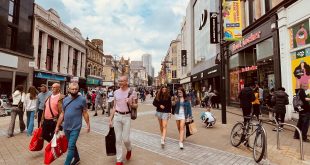Safety is often cited as one of the main barriers to cycling, with many campaigners noting a lack of suitable infrastructure as an urgent concern in our towns and cities. It’s no surprise that the number of cars on the roads is off-putting when it comes to trying out a new bike – but Covid-19 restrictions suddenly meant our roads were much quieter, with road traffic estimates showing that, in 2020, traffic from all motor vehicles decreased by 21% compared to the previous year.
This presented a unique opportunity for anyone wary of congestion to give cycling a go, opening up a new world of sustainable mobility. DfT statistics on walking and cycling in England found that women’s cycling levels increased by 56% in 2020, compared to a 12% rise for men. Historically, men cycle more than women in terms of both trips and stages cycled per person, and, while this was still the case in 2020, the cycling gap was smaller than in previous years. In 2019, men cycled almost three times (26 stages per person) more cycling stages than women (nine stages per person). In 2020, this dropped to two times more than women (29 stages per person compared to 14 stages per person for women).
The pandemic has also seen an increase in cycling for leisure purposes – which is thought to have impacted the increase in cycling stages in 2020 for all age bands except 30-39, which saw a 20% decrease. The largest increases in average cycling stages were for people aged 60-69 (14 stages in 2019 to 23 stages in 2020, an increase of 64%), with levels increasing to the highest on record.
Cycling levels also saw a boost in the capital, from 21% of Londoners in 2019/20 to 27% in 2020/21, and participation also widened, particularly among people from minority ethnic communities. The research also found that half of Black and Asian non-cyclists (49% and 46% respectively) are open to starting to cycle.
But the barriers to encouraging more people to cycle remain. Across all backgrounds, there were concerns around safety on the road and cycle theft, with 82% of non-cyclists worried about road safety and collisions. Personal safety was a bigger concern for women, Asian and mixed ethnicity Londoners, with 73% of women citing it as a concern. The research also found that protected cycle routes on busy streets, less traffic on minor streets and more secure cycle parking could help address barriers to cycling faced by people from diverse backgrounds.
Micromobility
Another form of active travel that has become increasingly common recently is electric scooters. While privately-owned e-scooters are banned on the roads, rental trials have been popping up across the country, providing an alternative transport that allows users to remain socially distanced. And shared scooters have also been shown to help level the micromobility playing field, not just in the UK but in other countries too. A survey of Bird (a shared e-scooter provider) riders revealed that nearly half of its riders in Atlanta are women.
This is a meaningful new statistic, particularly in light of the fact that, between 2006 and 2015, the Atlanta Metro Area was grappling with a 53% increase in collisions between cars and pedestrians/cyclists. And in the same Bird survey, 65% of respondents indicated that protected bike lanes would encourage them to use scooters more – the single biggest factor influencing that decision.
It’s obvious that safe infrastructure is key to driving up participation in cycling and micromobility. But it’s up to everyone in the industry to advocate for change and welcome these new riders in – and if we can make these new habits stick, it will benefit us all.
 BikeBiz Bicycle and cycling retail news
BikeBiz Bicycle and cycling retail news




